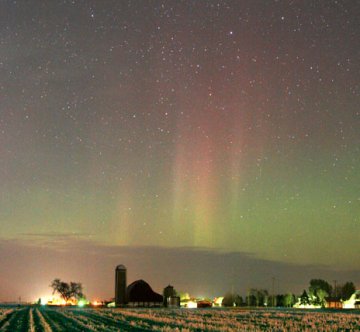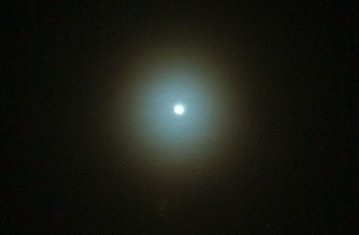 Did you liss last night's auroras? Next time get a wake-up call: Spaceweather PHONE!
Did you liss last night's auroras? Next time get a wake-up call: Spaceweather PHONE!
AURORA SURPRISE: Last night, the interplanetary magnetic field (IMF) tipped south, opening a crack in Earth's magnetic defenses against the solar wind. Bright auroras spread from Scandinavia to Alaska. "It was our best show this year," says Daryl Pederson who took this picture from Alaska's Kenai Peninsula.
Farther south in Chippewa Falls, Wisconsin, Tony Wilder was able to capture a subtle yet lovely hint of the display with a 25 second exposure:

Photo details: CANON 30D, SIGMA 17mm lens, ISO 1000, f3.5, 25 seconds
"Amazing to see the reds mixed with purple and green tonight!" says Wilder.
More geomagnetic storms are possible tonight and tomorrow when a solar wind stream is expected to hit Earth. Sky watchers should remain alert for auroras.
VENUS CORONA: Venus is so bright, it does things usually reserved for the Sun and moon. For example, Venus makes coronas. Photographer P-M Hedén of Vallentuna, Sweden, photographed this one on March 20th:

Photo details: Canon Digital Rebel XT, 75-300mm objective
"We can often see coronas around a bright moon," says atmospheric optics expert Les Cowley. "This is rarer. The circular patch with a straw-colored rim is an aureole, the centre of a corona produced by light from Venus scattered by tiny water drops in thin cloud or mist."
"I've never seen one like this before," adds Hedén. "The Venus halo together with a crescent moon setting over our lake felt almost unreal." Images: #1, #2, #3, #4.
Look for your own Venus coronas tonight. The planet materializes in the western sky at sunset bright enough to see even before the sky fades to black: finder chart.
March 19th Solar Eclipse Gallery
Updated March 23, 2007

